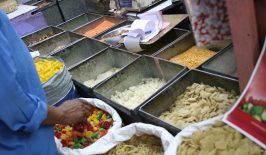Poverty Stoplight is tackling one of the UN’s key global goals: what “poverty” actually means, and what concrete actions can be taken to fight it.
An app available on smartphones and PCs, Poverty Stoplight aims to help families measure their own level of poverty and find strategies to solve their deprivations. It also works as a digital, accessible needs assessment for NGOs and humanitarian aid workers too, by literally mapping the needs of communities and allowing for the most efficient application of resources.
A family makes their own assessment of their level of poverty by answering 50 specific indicators, with the final results visualised in a dashboard for the family to study, share, and take stock of their reality. As per a traditional stoplight, the app uses the colours red, yellow and green to indicate a family’s given situation at any time.
Developed in Paraguay by Dr Martin Burt, the app has been used in more than 32 countries by families themselves as well as in collaboration with NGOs and humanitarian aid workers who can use it to carefully identify those living in poverty and better understand their particular needs. This allows for distribution of resources, and also works to aid families to understand their own situations. Families are able to create a prioritised plan customised to their needs, to help them overcome their worst problems and work a way out by themselves, and with the help of aid programmes.
“Poverty cannot be measured in terms of individuals,” Burt explained to Devex, in 2017. “People are united by a household or a family.”
The app is already showing results, with the ‘gamification’ aspect of the app showing unique ways to generate ‘contests’ between families to garner support to make their way out of poverty. Poverty comes in many forms, from food, potable water, to energy deprivation.
This is very different to the normal top-down approach, where policy-makers take an overview or high-level blanket approach to do their best to help, without understanding individual causes or getting to the root cause of poverty. Of course, this is not diminishing well-meaning efforts from larger organisations, but a bottom-up strategy likely to be an effective complement to this approach. And by flipping the focus, the families who take the survey are able to become actors, not objects, of development and poverty elimination.
In the past three years, Poverty Spotlight has leveraged support from the private sector on top of $1.9 million from nine donors to help improve the welfare of 27,000 families, according to Burt.
One interesting dynamic is the fact that private companies are also utilising the tool to help their own workers and better serve their social responsibilities – allowing their employees to self-assess their own poverty levels and then offering practical training, banking and education solutions to help them become agents of change in their own lives.
“We have 70 companies now in Paraguay, and several lined up in Mexico, that want to go beyond corporate social responsibility to help all their workers eliminate poverty,” explained Burt.
“It is for the company to understand how it can use its resources. Maybe the workers don’t know that there is a housing subsidy, for example. So the owner of the company will bring in the government official from the housing authority to give a talk on how to apply for a housing subsidy. It might call the ministry of health and have a day of vaccinations against influenza one day at the factory. Maybe it starts offering counseling services to understand what can be done about violence against women. In one particular case, when many workers did not have savings accounts, a company worked with a bank to open up savings account for every worker and started offering financial literacy courses. Think if one day Wal-Mart, if one day Nestlé did this. The possibilities are endless. It really is powerful because it is a productivity tool and not a charity.”






